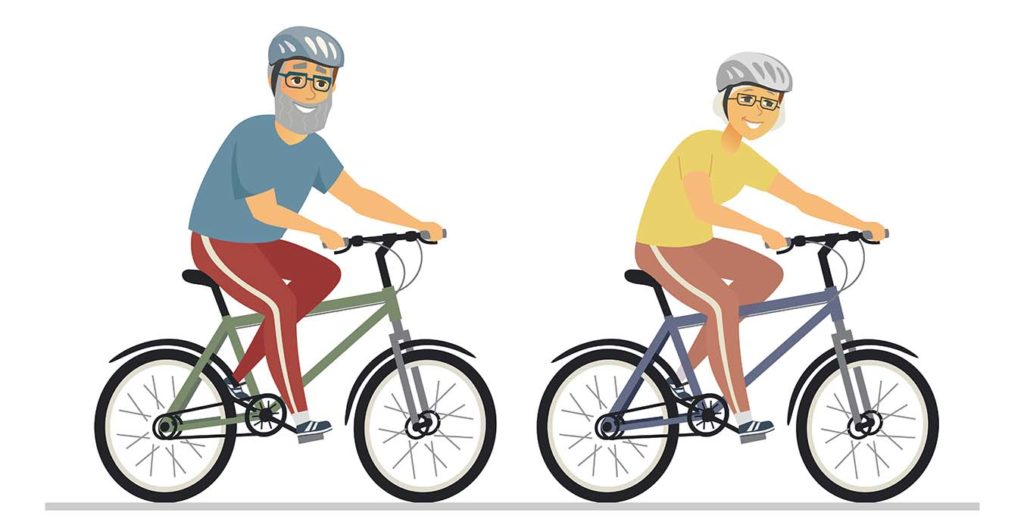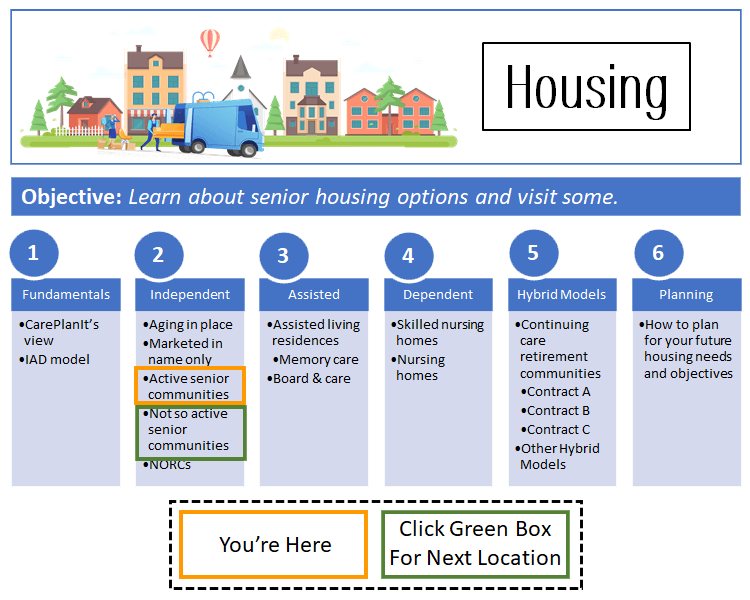Active Senior Living Communities
Click here to see what's on this page.
CarePlanIt wants you to learn this about active senior living communities. Communities that focus on the term “active,” take it seriously. The Oxford English Dictionary defines active as: “Engaging or ready to engage in physically energetic pursuits, and moving or tending to move about vigorously or frequently.” And communities that focus on active mean it.

The King of active senior communities is Del Webb, owned by the homebuilder Pulte Group. They describe their communities as “[age restricted] active adult communities [that] are highly amenitized, offering a variety of features, including golf courses, recreational centers, and educational classes, to facilitate the homebuyer maintaining an active lifestyle.” There are also others like Robson Resort Communities.
Some Communities Don’t Seek Legal Status
Most of the high-end senior communities are legally qualifying adult communities. They restrict residency to mostly seniors. But occasionally, the communities are so large and relatively close to urban areas, that they choose to be open to everyone. In other words, they choose not to seek qualifications as adult communities.
Carmen and I examine “Marketing In Name Only” adult communities, or MINOS, here.
CarePlanIt Defines Active Adult Facilities As Legally Qualifying
CarePlanIt defines active adult communities as age-restricted communities that provide services and facilities supporting healthy, active seniors. In other words, they focus on active adults. They also legally qualify as “adult” communities. However, they market an “active” lifestyle. That’s code for “healthy” and “mobile.” They build age-restricted adult communities with attached amenities like pools, gyms, jogging paths, golf courses, and lakes. Therefore, they don’t want unhealthy or immobile seniors.
These Communities Are Not For Seniors With Mobility Issues
For example, active senior living communities don’t include comprehensive handicap access, communal cafeterias, onsite nurses, and medical facilities. In fact, if you see these types of services, you’re looking at an assisted living facility.
If You Want To Age In Place, Avoid “Active” Communities
Do not seek out active adult communities if you want to age in place. These communities are not set up to accommodate unhealthy seniors. For example, they often have community restrictions involving live-in caregivers and children. In addition, they rarely have easy access ramps. Also, many don’t even have pedestrian sidewalks. This is all done for a reason; they sell to active adults, not inactive ones.
Carmen and I recommend you visit these facilities. First, they will take you on an amazing tour and show you amazing homes. Second, their facilities are immaculate. Finally, their residents are friendly and healthy. The activities are many and varied. They have clubs and interest groups. In many ways, it’s like college for adults, with better accommodations. They also charge more than a good private college.
How To Determine If The Community Supports Inactive Seniors
If you want evidence of how supportive they are to ailing seniors, ask these two simple questions. “How many clubs or groups do you have that help sick and frail seniors.” “Can you give me the phone numbers of a few members so I can talk to them?” Carmen and I have never been to an “active adult community” where those questions are addressed in ways that make us confident these communities want wheelchair-bound seniors or those that need caregiver monitoring. In other words, “active” communities rarely want to spend their energies on the “inactive.”
However, there’s nothing wrong with the lack of assisted services. Just plan on moving out if you or your spouse loses mobility or needs lots of care.
Other Resources On Active Senior Living Communities
The Del Webb site explains what “active” senior communities are all about here.
Robson Resort Communities is also an example of an “active” adult living community. See them here.
